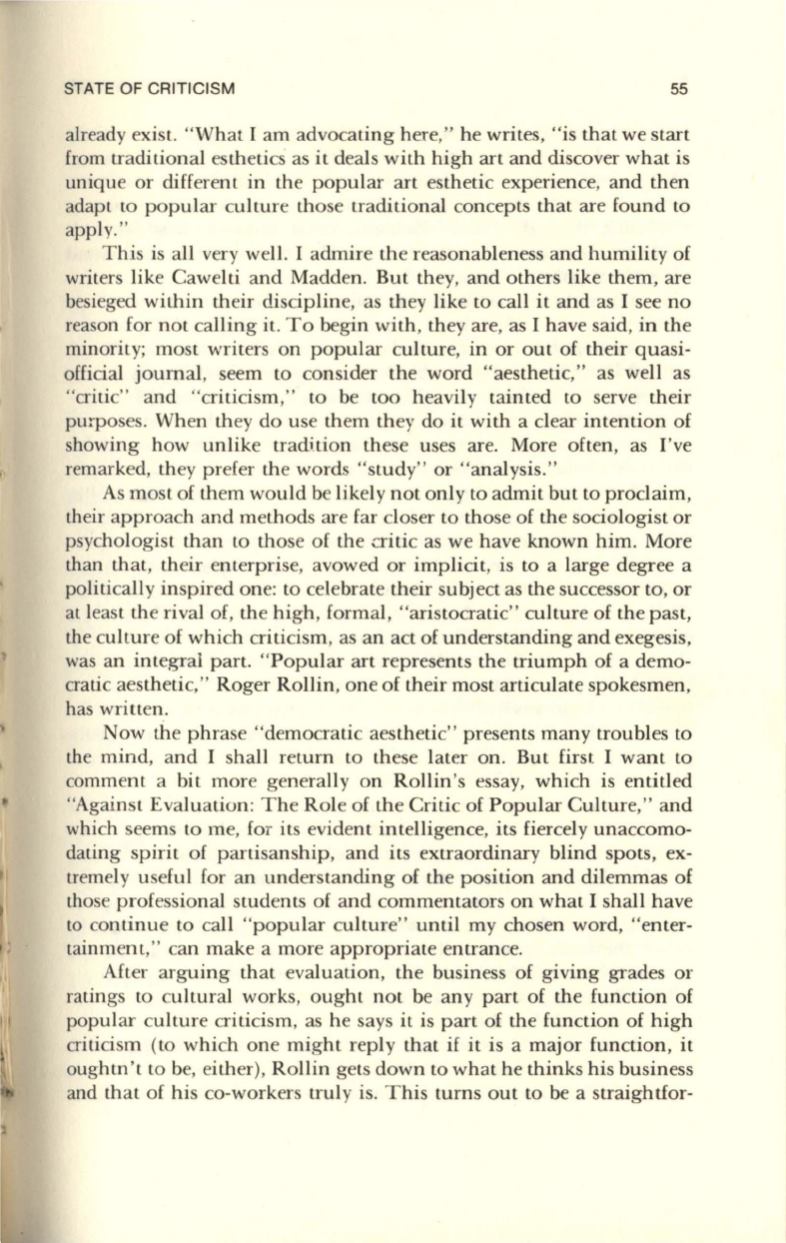
STATE OF CRITICISM
55
already exist. "What I am advocating here," he writes, "is that we start
from traditional esthetics as it deals with high art and discover what is
unique or different in the popular art esthetic experience, and then
adapt
to
popular culture those traditional concepts that are found
to
apply."
This is all very well. I admire the reasonableness and humility of
writers like Cawelti and Madden. But they, and others like them, are
besieged within their discipline, as they like to call it and as I see no
reason for not calling it. To begin with, they are, as I have said, in the
minority; most writers on popular culture, in or out of their quasi–
official journal, seem to consider the word "aesthetic," as well as
"critic" and "criticism," to be too heavily tainted to serve their
purposes. When they do use them they do it with a clear intention of
showing how unlike tradi.tion these uses are. More often, as I've
remarked, they prefer the words "study" or "analysis."
As most of them would be likely not only to admit but to proclaim,
their approach and methods are far closer to those of the sociologist or
psychologist than to those of the critic as we have known him. More
than that, their enterprise, avowed or implicit, is to a large degree a
politicall y inspired one: to celebrate their subject as the successor to, or
at least the rival of, the high, formal, " aristocratic" culture of the past,
the culture of which criticism, as an act of understanding and exegesis,
was an integral part. "Popular art represents the triumph of a demo–
cratic aesthetic," Roger Rollin, one of their most articulate spokesmen,
has written.
Now the phrase "democratic aesthetic" presents many troubles to
the mind, and I shall return to these later on. But first I want
to
comment a bit more generally on Rollin's essay, which is entitled
"Against Evaluation: The Role of the Critic of Popular Culture," and
which seems to me, for its evident intelligence, its fiercely unaccomo–
dating spirit of partisanship, and its extraordinary blind spots, ex–
tremely useful for an understanding of the position and dilemmas of
those professional students of and commentators on what I shall have
to
continue
to
call "popular culture" until my chosen word, "enter–
tainment, " can make a more appropriate entrance.
After arguing that evaluation, the business of giving grades or
ratings to cultural works, ought not be any part of the function of
popular culture criticism, as he says it is part of the function of high
criticism (to which one might reply that if it is a major function, it
oughtn ' t to be, either), Rollin gets down to what he thinks his business
and that of his co-workers truly is. This turns out to be a straightfor-


